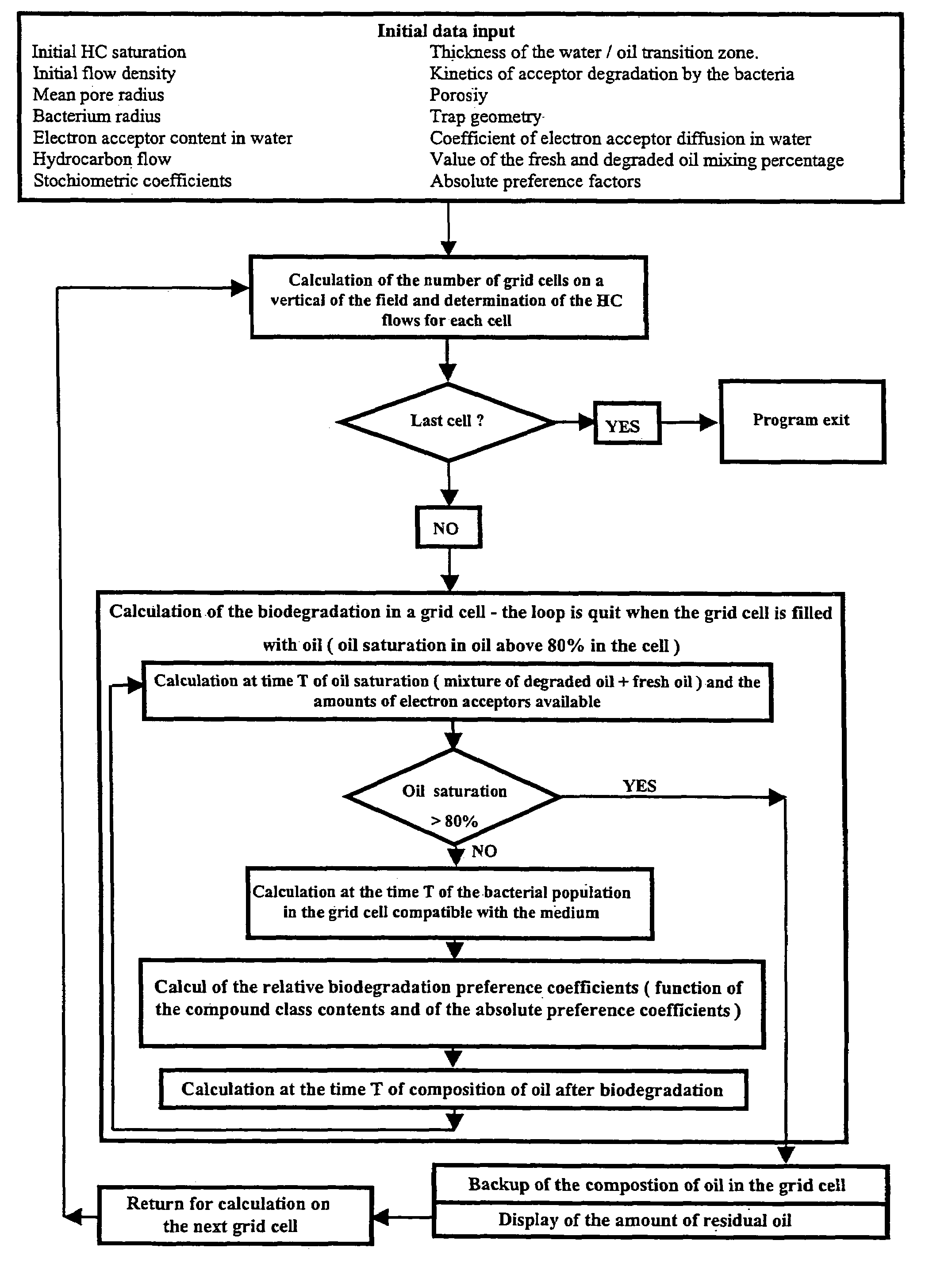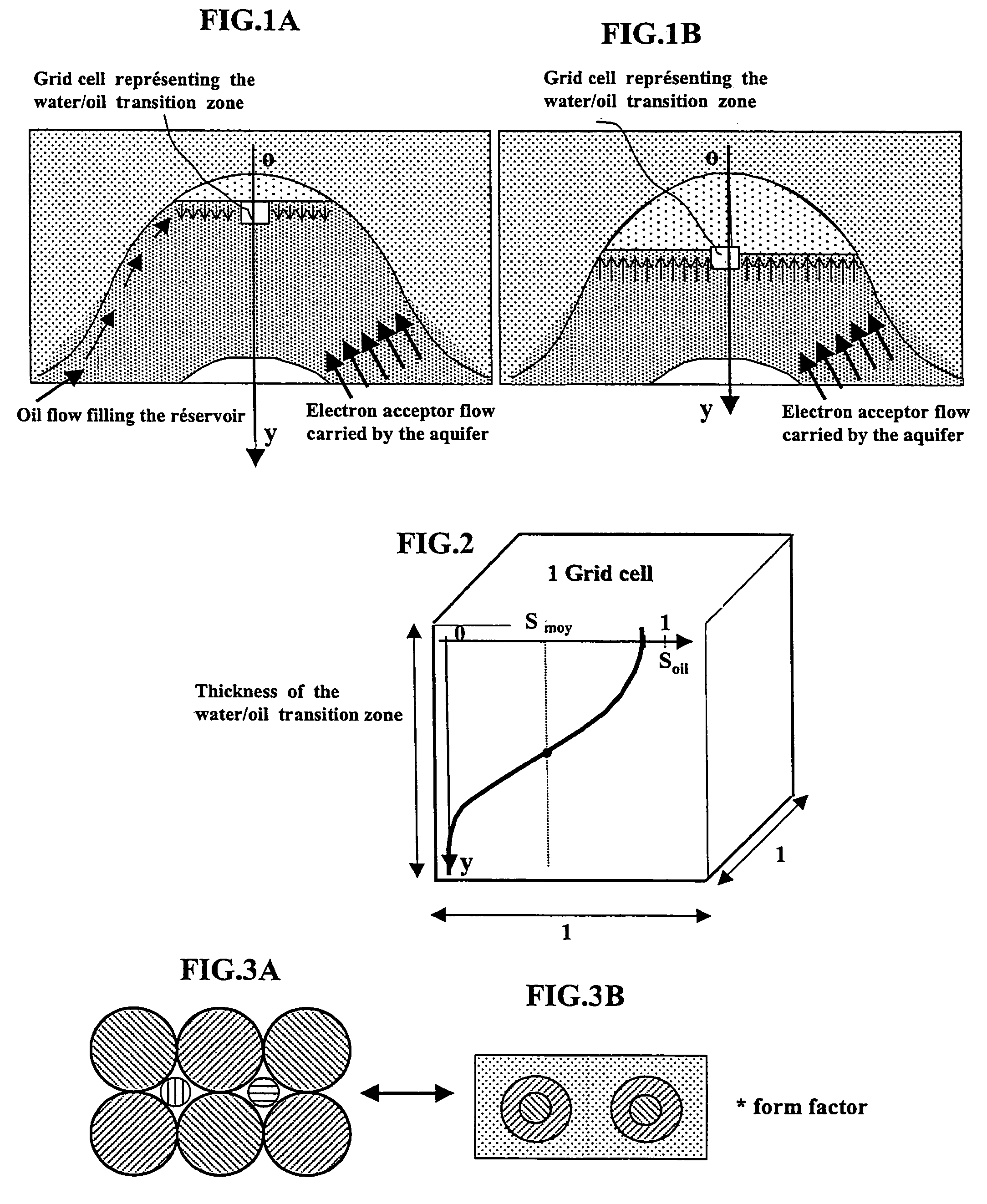Method for modeling hydrocarbon degradation in an oil deposit
a hydrocarbon degradation and oil deposit technology, applied in the direction of instruments, sealing/packing, borehole/well accessories, etc., can solve the problems of difficult production, not very cost-effective commercially, and two mechanisms are not independent, and the results obtained by this type of model are not really realisti
- Summary
- Abstract
- Description
- Claims
- Application Information
AI Technical Summary
Benefits of technology
Problems solved by technology
Method used
Image
Examples
Embodiment Construction
[0057]The model takes account of an oil composition comprising eight compound classes. Each compound class is associated with a stoichiometric balance and a preference factor; simulation thus allows to follow the evolution of the oil composition.
[0058]It uses a biodegradation kinetics involving bacteria attack mechanisms in the porous medium.
1.1.1 The Model
[0059]The tool for implementing the model is for example a known software platform called FLUID FOLDER, suited for fast simulation of traps, fluids and alteration phenomena: mixing, leaching, phase change, thermal cracking, etc.
[0060]In this model, we consider a trap (porous zone with a curved geometry allowing oil accumulation) that is discretized by means of a grid pattern. The fluid is biodegraded in a grid cell located near to the water / oil transition zone of the reservoir (FIGS. 1a, 1b). Each grid cell is a parallelepiped whose base has a 1-unit surface area and whose height is the thickness of the water / oil transition zone a...
PUM
| Property | Measurement | Unit |
|---|---|---|
| mean radius | aaaaa | aaaaa |
| porosity | aaaaa | aaaaa |
| pore size | aaaaa | aaaaa |
Abstract
Description
Claims
Application Information
 Login to View More
Login to View More - R&D
- Intellectual Property
- Life Sciences
- Materials
- Tech Scout
- Unparalleled Data Quality
- Higher Quality Content
- 60% Fewer Hallucinations
Browse by: Latest US Patents, China's latest patents, Technical Efficacy Thesaurus, Application Domain, Technology Topic, Popular Technical Reports.
© 2025 PatSnap. All rights reserved.Legal|Privacy policy|Modern Slavery Act Transparency Statement|Sitemap|About US| Contact US: help@patsnap.com



